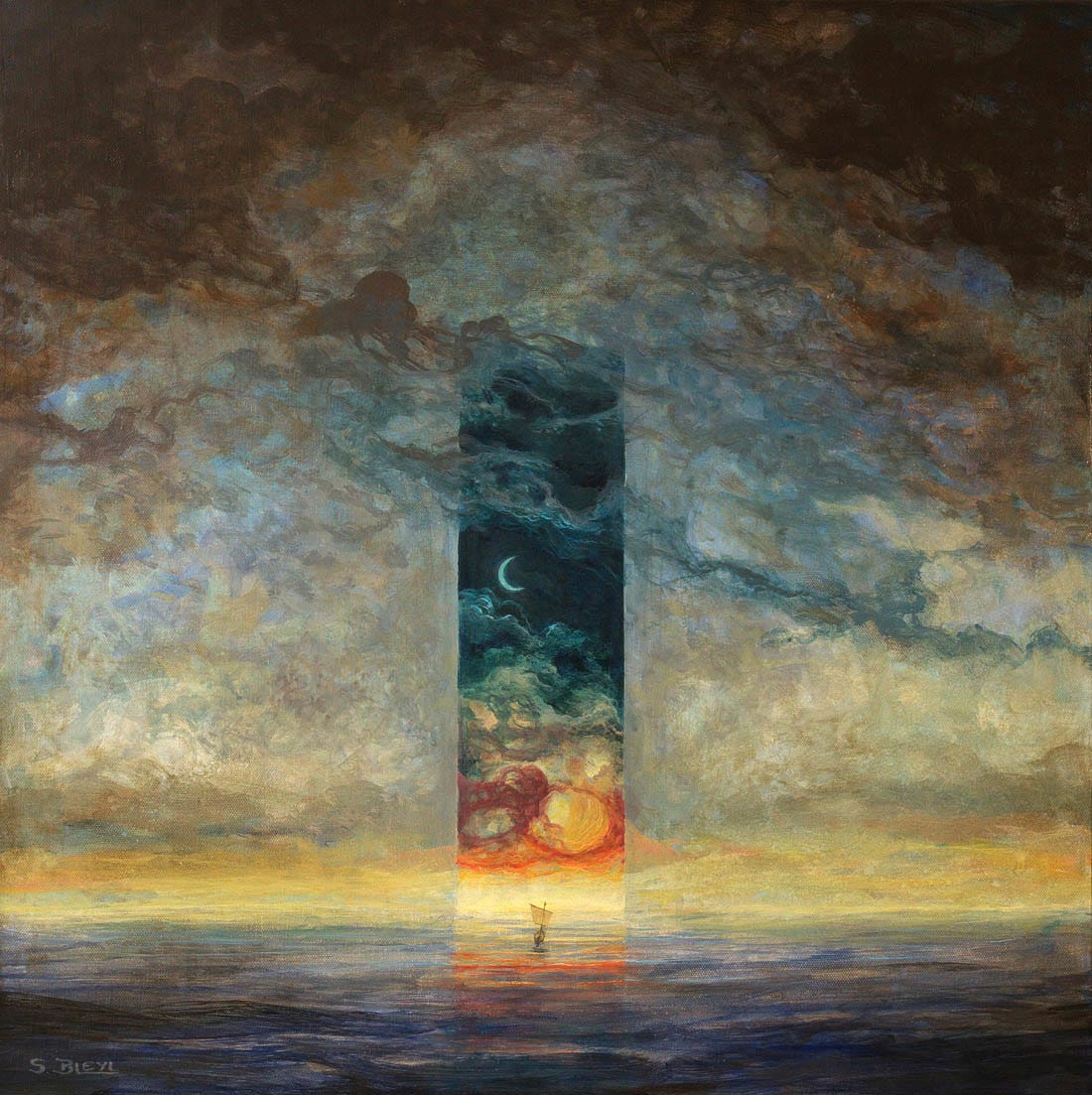Portals
I too shall wend, tide what betide,
Whither these gentle ladies go,
And learn then spot where they abide!
He took his cloak and harp, and hied
Him forth, his harp upon his back,
Nor stock nor stone could turn aside
His footsteps from that beaten track.
In at a rock the ladies rode,
And fearlessly he followed fast.
When far into the rock he strode,
It grew more bright, and so at last
Into a far countree he passed
—Sir Orfeo
Memory is not local to the individual. Memory is enfolded into matter, it exists in complex patterns in the air, in the earth, and in the oceans. Nothing is lost; all is remembered. Many acts of imagination, the visionary process, are a projection of this memory; this articulation of the living cosmos is one of the great purposes of the human form. Irruptions of non-local memory are triggered by rituals and encounters with high synchronicity. Any action that blots out local memory will to some degree trigger non-local memory, hence the use of schizotropic substances to confound the mind in some shamanistic traditions. Ritual and geomancy are a means to sculpt synchronistic encounters; in other words— there are portals.
These portals, or windows, were opened by our ancestors in order to access cosmic memory, or interface with encosmic elementals, the administrative spirits of the earth. Rituals at portal sites often represented the marriage, a unity of the organic and inorganic, a resolving of duality; transcending local memory and synchronizing with cosmic re-cognition. This access does not come without risk or cost, hence the careful sanctification of such places and processes. There are predators in the ether that would devour and digest the psyche, the threshold between Here and Elsewhere is filled with Rapine.
The testimonies of some individuals who have "reappeared," particularly children, after alleged abductions, can be more easily attributed to folklore than extraterrestrial explanations. These accounts often involve being taken to an underground, brightly lit world, similar to the folkloric tradition of "Little People" found in both European and Native American folklore. These mythical beings are said to dwell in “hidden dimensions” and kidnap humans, who occasionally manage to return. In Strange Beauty, A. Siewer describes fairy doors in mounds as “portals of life and death” that offer an otherworld of “ancestral deities, older inhabitants, memory shaping identity with the land, and limits and ambiguities of mortality… [an] ecoregion that includes the nonhuman.”
Many disappearances occur in geographical areas considered taboo by native populations, often due to their association with dangerous spirits. Places with names like Devil's Head, Devil's Slide, and Devil's Nest are examples of locations where people have gone missing. These names often stem from the Christianization of native folklore, which advised against venturing into these areas. This parallels the Gaelic tradition, where fairy abductions are said to happen in places marked by ancient megalithic ruins or funerary mounds. These are abandoned portals, windows left half-open.





